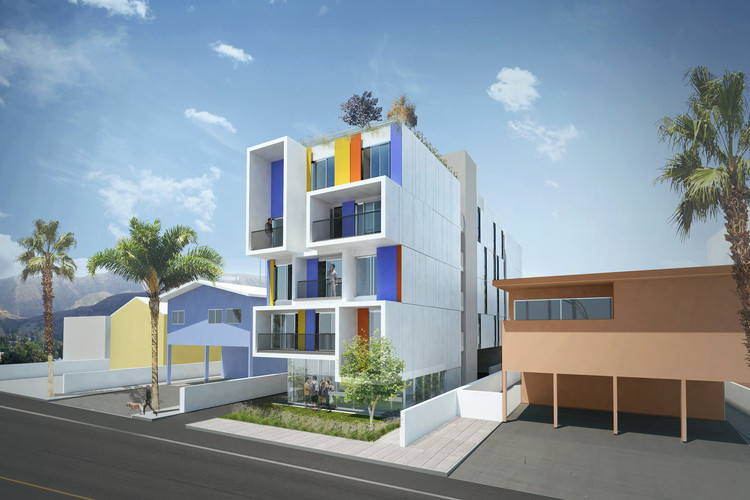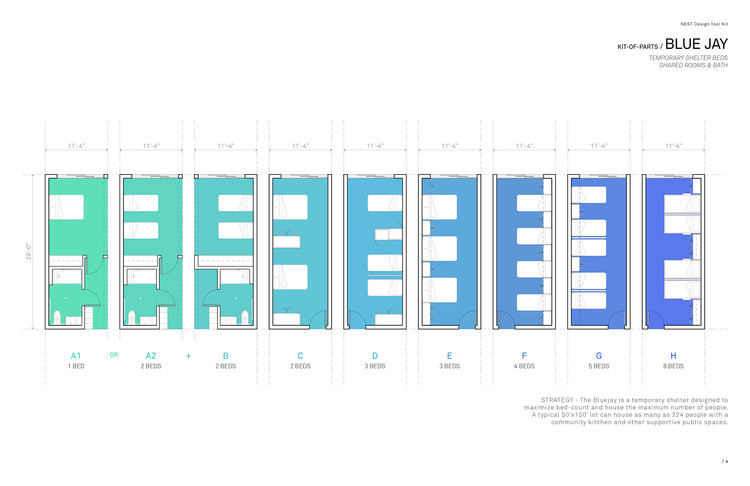
Brooks + Scarpa and Plant Prefab have developed a new toolkit to address housing shortages. Scalable as an infill solution, the Nest toolkit can be configured in multiple ways using site types and typical lot sizes, or a combination of them. The toolkit was made to address LA’s shortage of supportive housing for the homeless and provide flexibility to meet the needs of a particular site, neighborhood, and bed count.

Brooks + Scarpa designed a series of potential unit plans that differ according to rapid-rehousing, single-room occupancy (SRO) and traditional multi-family formations. Nest isn’t a standard home "model," but a kit of parts—scalable and adaptable for use on any combination of typical urban lots.It is designed to give cities and nonprofit developers a variety of designs that can save costs by using prefab parts—and the housing can also be built more quickly than traditional construction.

The first organization to use the kit will be a nonprofit in Santa Monica that currently has a waiting list of 8,000 people looking for affordable housing. The Nest LivingHomes toolkit won a $1 million grant from the 2018 LA County Housing Innovation Challenge, which sought projects that address the homelessness epidemic. The grant will support a development for the Community Corporation of Santa Monica, which is currently securing land for the project.
The kit includes multiple options for designs that can be built on unused urban lots throughout a city, such as a homeless shelter that can house as many as 224 people on a 50-by-150-foot lot, permanent supportive housing for families, and shelters that can be installed to run off-the-grid in parking lots. Like other Plant Prefab designs, the buildings will be constructed in a factory rather than directly on urban sites.

This is Plant’s first multi-family system; a “kit-of-parts,” adaptable for a variety of different urban lot conditions and housing program needs; the concept is grounded in the belief that housing for the homeless should be scattered throughout regions, rather than having housing concentrated in one community and a main goal was to give unsheltered citizens a sense of dignity and shared social spaces on underutilized parcels of land.

















